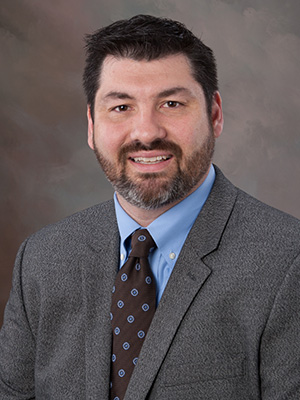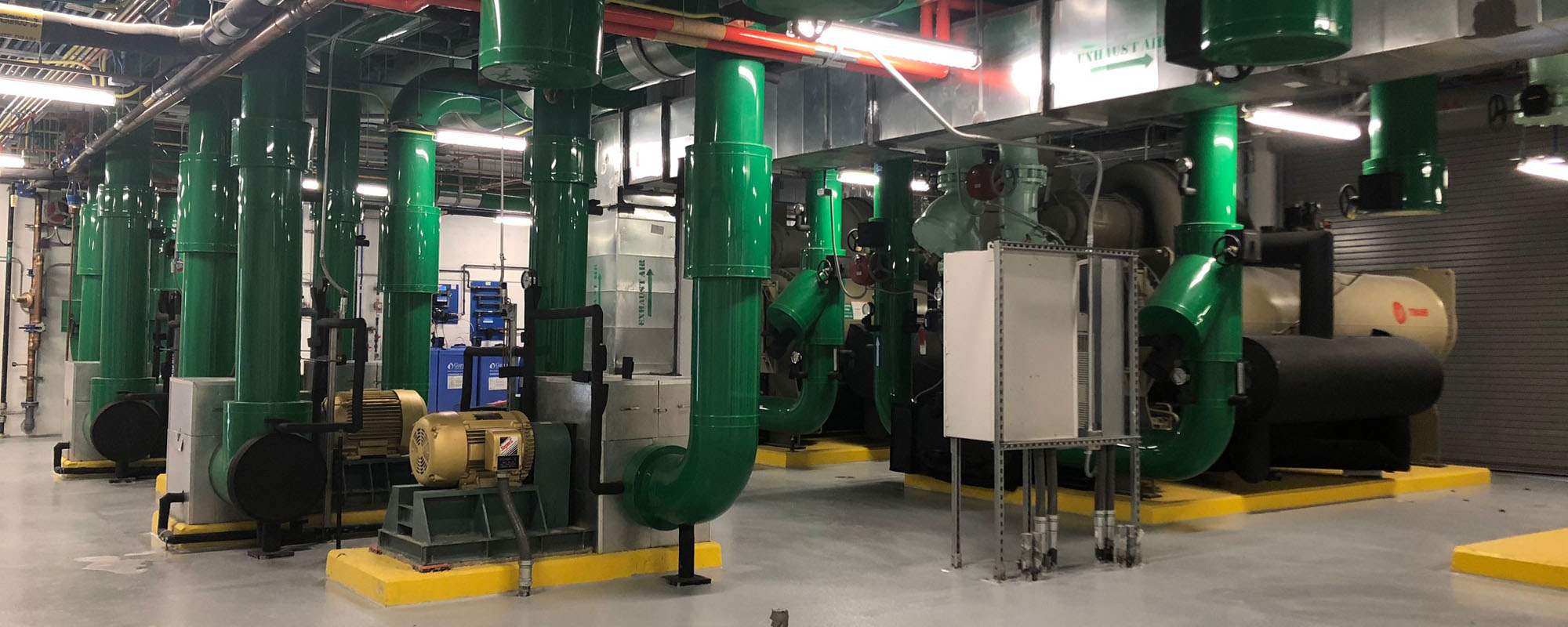 Invisible to patients, staff, and visitors, the Central Energy Plant (CEP) is the beating heart of a hospital campus. With its 24/7/365 distribution of heating, cooling, and power redundancy, a well-operated CEP underpins the treatment of each patient and the success of every caregiver.
Invisible to patients, staff, and visitors, the Central Energy Plant (CEP) is the beating heart of a hospital campus. With its 24/7/365 distribution of heating, cooling, and power redundancy, a well-operated CEP underpins the treatment of each patient and the success of every caregiver.
Despite its critical nature, reinvesting in CEP infrastructure often slips down the list of priorities in many hospitals because of the overwhelming number of more visible, patient-facing upgrades needed. With the pandemic’s fiscal crisis impacting healthcare systems, it will become more challenging to balance funding for infrastructure versus patient needs.
To better navigate this balancing act, we spoke with Kyle Davis, mechanical engineer and Senior Mechanical Preconstruction Manager at Robins & Morton, on his experiences with CEP construction and operations.
Q: What are some of the challenges for hospitals operating a Central Energy Plant today?
A: The equipment and technology in quite a few of the plants we see are either close to or past a reasonable lifecycle. Capital upgrades and equipment replacement projects are deferred for a host of reasons.
First, investments in infrastructure do not generate revenue. The CEP plant is also out of sight and out of mind. If there is an emergency or a breakdown, that gets attention. Understandably, healthcare providers need to prioritize patient care and revenue-producing projects. Yet, deferring infrastructure upgrades and replacements can create costly problems in the future.
Another reason for delays on CEP projects is the uncertainty hospital facilities and operations staff have about choosing the right path, or best solution, for their particular circumstance. Many of the manufacturers and consultants offering advice or proposing a purchase have skin in the game. They are selling their company’s technology, equipment, or service. They are well-intentioned but not exactly objective advisors. Hospital staff will hear conflicting advice about what is needed, and that leads to indecision and delay.
Q: How do you advise hospital staff to help reduce uncertainty and stay ahead of problems?
A: We start with gathering and validating the data. Developing a lifecycle cost analysis for each option, including maintaining the status quo, is an important and objective metric to use. This lifecycle analysis needs to include not only fixed costs such as equipment and systems investments, but also investigate the avoided costs associated with maintenance and operations expenses that may be reduced or eliminated following a capital upgrade. What is the true cost of band-aiding the problem? People are always surprised to see these hidden costs and measure their drag on the budget over an extended timeframe.
Another revealing data point is the tangible savings a hospital can achieve with the performance and added efficiency of new CEP equipment. When you calculate the energy savings, the elimination of frequent and costly repairs, and the reduction in labor hours that comes with 21st-Century automation and integration, the return on investment starts to build the case for taking action.
We also believe in tapping into the expertise of a multiple cast of experts. No one person or company can claim to know all the nuances of CEP operations or provide all the right experience to inform complex decisions that hospitals need to make. We get involved in CEP decisions mostly when we begin a new healthcare construction project. An expansion or addition to a hospital campus means a greater demand on the CEP capacity and performance. When needed, we pull together several experienced partners – the mechanical contractor, the [mechanical, electrical, and plumbing] engineer, hospital facilities staff, Robins & Morton estimators and preconstruction pros to explore options and arrive at objective recommendations.
Q: How does that play out realistically? What happens next?
A: The objective is to provide multiple options that the client can consider. The team might offer an opinion or a preferred option. But if we provide the data, cost projections, and insight about the constructability, resilience, and future flexibility of the options, that helps narrow the client’s choices.
We recently completed a six-story bed tower and emergency department expansion for AdventHealth in Florida. The project had a fixed budget, and one of the big dilemmas for the client was deciding how much modification of the aging CEP was needed. The original plan called for selective replacement of failing equipment items – about 25% of what was there.
The hospital facilities staff worried about the CEP’s age and its chronic performance problems, so they asked us to bring our team into the plant to provide an assessment. We discovered issues with the equipment’s condition and were concerned about its reliability to handle the increased demand from the 110,000 additional square feet soon to come online.
Working with the project’s team engineers, Robins & Morton recommended three options for the client. AdventHealth decided on a sizeable replacement and upgrade scenario, including investing in a new control system that optimizes the systems within the CEP to maximize efficiency. The return on investment, created by a 35% to 40% improvement in CEP performance, energy savings, and avoided maintenance costs, allowed the hospital to invest in the upfront cost from project contingency reserves.
Q: Is there a takeaway lesson that comes from the AdventHealth and other hospitals with a CEP component?
A: A couple of lessons come to mind. Healthcare clients have energy management options today that simply did not exist a few years ago. Don’t be afraid to investigate and validate the potential benefits of new technology. Consider any expansion or renovation project as an opportunity to research methods and equipment that will improve operations and reduce risk.
There are smart control systems, for example, that use Artificial Intelligence to precisely align output efficiency and coordinate with multiple building systems to optimize energy use. A typical hospital has 26 local systems in its infrastructure collection. Everything is connected, and these new intelligent systems will reduce operations costs and surprises. The data, now available from an interconnected campus, is so valuable in running a modern hospital.
Improvements can be made at any scale, and the benefit of even incremental upgrading done across phases will add up. Actions to retrofit air handlers, upgrading to a much more efficient system to generate the campus hot water, or to create redundancies in HVAC systems to provide a higher level of patient safety and comfort, will produce measurable impacts.
Q: What do you see for evolving trends and needs while looking ahead in the future of infrastructure and CEP operations?
A: It is an understatement to say how difficult it is to predict what the future of healthcare delivery will look like. It was changing fast before the coronavirus crisis hit earlier this year, and now the pace of change will likely speed up.
One thing we are preparing for is the increasing need for flexibility and readiness. Applied to CEP management and infrastructure, the adaptability of mechanical, electrical, and utility systems through a modular approach will help clients move quickly to make changes in their patient capacity and safety initiatives. Modular CEP approaches can build in the expandability and flexibility early and, in my opinion, do it in a more cost-effective way.
As we answer to new and emerging needs of our clients, we are learning every day about the value of finding streamlined ways to reduce schedule and cost parameters. Patients will expect a lot in terms of their overall confidence as they return to the hospital for care. As healthcare builders, we see infrastructure as a key component to patient safety and well-being, even though the patients never think about the CEP. We all need to answer this expectation by creating a safe, positive patient experience.

